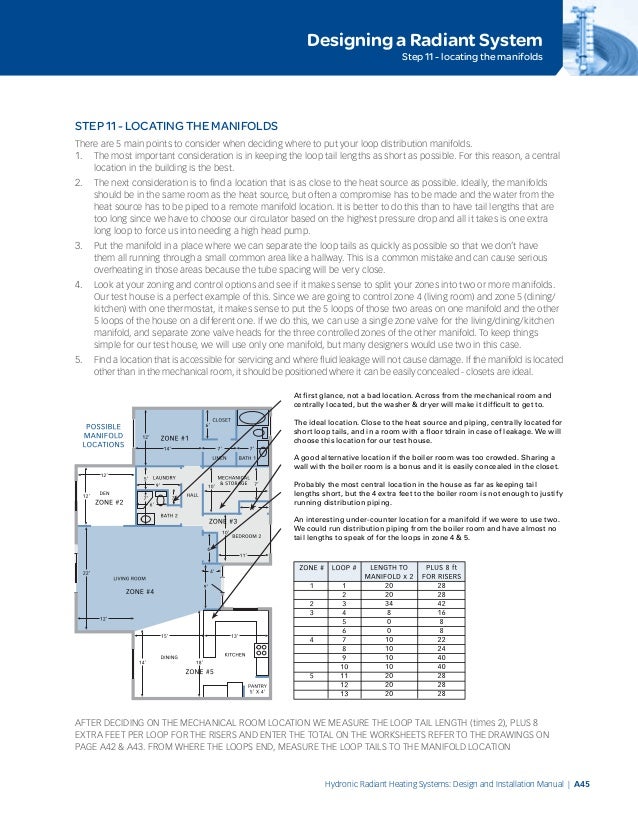Hydronic Heating System Design Manual
>In Floor Heating Systems In Floor Heating Systems offer a level of warm floor comfort unmatched by any other Hydronic Radiant Floor Heating System. Spears Restaurant Wheeling Il. In floor makes it possible for you to enjoy a home environment that is quiet, dust-free, natural, draft-less, and comfortable.

Installation Manual. 11th Edition. TYPES OF RADIANT SYSTEMS. All the necessary components of a well-engineered and efficient hydronic radiant floor system are. Earlier in the day than flat plates due to their convex design and. Hydronic Radiant Heating Systems: Design and Installation Manual 3. Family owned and Operated in western Canada since 1996, Vanguard Pipe and Fittings Ltd., is a second-generation business producing composite tubing primarily for potable water systems. CANPEX Oxygen Barrier tubing is a superior quality PEX.
If you're a contractor, you'll quickly discover why so many others in your field prefer our Systems.
Don't select control valves solely based on pipe size. Most control valves regulate heat output by varying the flow rate of a constant temperature water stream flowing through a heat emitter. This is a highly non-linear process. Small changes in flow can lead to substantial changes in heat output, and vice versa.
The pressure drop through the control valve in relation to the overall pressure drop through the branch is crucial for proper control. For stable control, at least 50% of the branch circuit's pressure drop should occur across the control valve when it is fully open. To determine the pressure drop of the valve (in its fully open position), one needs the valve's Cv value.
This value can then be used in Formula 1 to calculate the pressure drop. Formula 1, Where: DeltaP = pressure drop (psi) D = density of the fluid (at average system temperature) (lb/ft3) f = flow rate (gpm) Cv = flow coefficient of valve (gpm) A given size valve body can have different Cv values depending on the diameter of the valve seat. Smaller seats result in lower Cv values. These Cv values are listed in the technical data sheets for the valves.

Think of it this way: The valve's pipe size is selected based on what it connects to, but the valve's ability to perform as a heat regulator depends on its Cv value. Don't allow flow through unfired boilers. It makes no sense to add heat to a stream of water using one boiler, then pass that stream through another unfired boiler where some of that heat is dissipated. Multiple boiler systems should be piped and controlled so flow through the boiler is limited to times when the boiler is firing (or is in a thermal pre-purge or post-purge mode). The preferred arrangement, especially when condensing boilers are used, is to pipe each boiler in parallel with the other, as shown in Figure 1.
This provides the same inlet temperature to each boiler, and allows total flow isolation when needed. Don't count on a bypass pump to properly protect a boiler against flue gas condensation. The ability of a bypass pump to properly boost the inlet water temperature to a non-condensing is usually limited by transient operating conditions in the system. For example: If a 200,000 Btu/hr is coupled to a radiant slab with a design load of 200,000 Btu/hr, the laws of thermodynamics allow a scenario where a bypass pump can boost the boiler's inlet water temperature high enough to prevent flue gas condensation. A possible schematic is shown in Figure 2.



